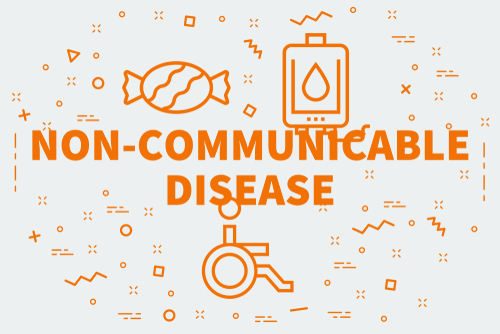Investing in noncommunicable disease control generates major financial and health gains: WHO report
UNI May 17, 2018
A new WHO report shows that the world's poorest countries can gain US 350 billion dollar by 2030 by scaling up investments in preventing and treating chronic diseases, like heart disease and cancer, that cost an additional US 1.27 dollar per person annually.

Such actions would save more than 8 million lives over the same period. The report, titled Saving lives, spending less: a strategic response to NCDs, launched yesterday reveals, for the first time, the financing needs and returns on investment of WHO’s cost-effective and feasible “best buy” policies to protect people from noncommunicable diseases (NCDs), the world’s leading causes of ill health and death.
It shows that for every US 1 dollar invested in scaling up actions to address NCDs in low- and lower-middle-income countries (LLMICs), there will be a return to society of at least US 7 dollar in increased employment, productivity and longer life. "The overarching message of this powerful new WHO report is optimistic," says WHO Director-General Dr Tedros Adhanom Ghebreyesus. "Tackling NCDs is an opportunity to improve health and economies."
If all countries use these interventions, the world would move significantly closer to achieving Sustainable Development Goal 3.4 to reduce premature death from NCDs by one-third by 2030. Among the most cost-effective “best buy” interventions are increasing taxes on tobacco and alcohol, reducing salt intake through the reformulation of food products, administering drug therapy and counselling for people who have had a heart attack or stroke, vaccinating girls aged 9-13 years against human papillomavirus and screening women aged 30─49 years for cervical cancer.
"NCDs impose huge economic costs that fall heaviest on the low- and middle-income countries that can least afford them. This report makes the case for bold action against NCDs from a business perspective, and it outlines some of the most effective ways to reduce their toll, which can help to direct more resources to where they are needed most," says WHO Global Ambassador for Noncommunicable Diseases Michael R. Bloomberg.
LLMICs currently bear the brunt of premature deaths from NCDs: almost half (7.2 million) of the 15 million people who die globally every year between the age of 30 and 70 are from the world’s poorest countries. Yet global financing for NCDs is severely limited, receiving less than 2 per cent of all health funding. But the report indicates that taking effective measures to prevent and control NCDs costs just an additional US 1.27 dollar per person per year in LLMICs.
-
Exclusive Write-ups & Webinars by KOLs
-
Daily Quiz by specialty
-
Paid Market Research Surveys
-
Case discussions, News & Journals' summaries